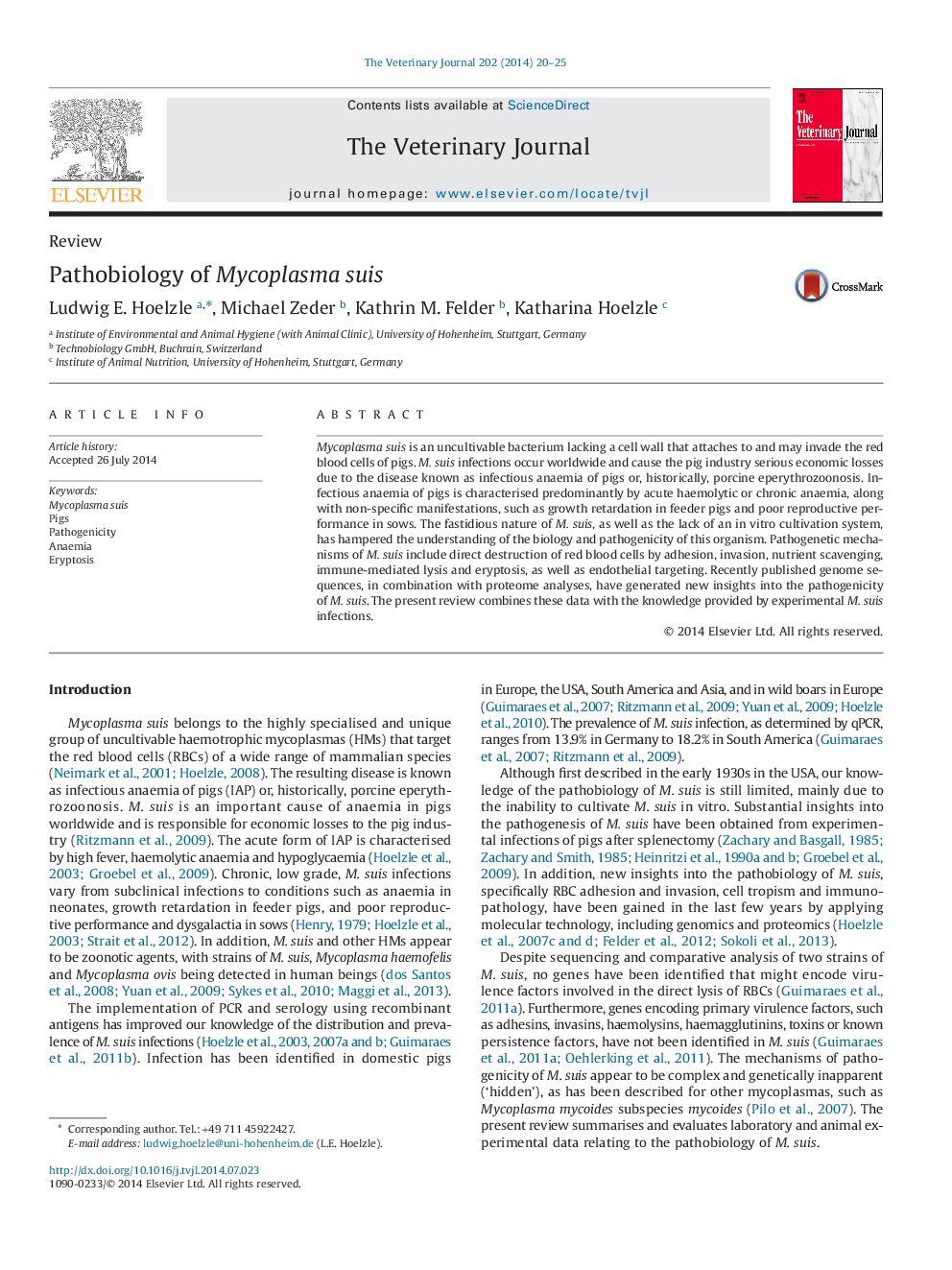| کد مقاله | کد نشریه | سال انتشار | مقاله انگلیسی | نسخه تمام متن |
|---|---|---|---|---|
| 5797889 | 1111762 | 2014 | 6 صفحه PDF | دانلود رایگان |
- Mycoplasma suis causes persistent infections leading to different clinical outcomes in pigs, including acute haemolytic and chronic anaemia.
- M. suis pathogenesis mechanisms are complex and not confirmed genetically.
- Several putative pathogenesis factors and related mechanisms have been proposed.
- Development of an in vitro culture system will boost M. suis research in the future.
Mycoplasma suis is an uncultivable bacterium lacking a cell wall that attaches to and may invade the red blood cells of pigs. M. suis infections occur worldwide and cause the pig industry serious economic losses due to the disease known as infectious anaemia of pigs or, historically, porcine eperythrozoonosis. Infectious anaemia of pigs is characterised predominantly by acute haemolytic or chronic anaemia, along with non-specific manifestations, such as growth retardation in feeder pigs and poor reproductive performance in sows. The fastidious nature of M. suis, as well as the lack of an in vitro cultivation system, has hampered the understanding of the biology and pathogenicity of this organism. Pathogenetic mechanisms of M. suis include direct destruction of red blood cells by adhesion, invasion, nutrient scavenging, immune-mediated lysis and eryptosis, as well as endothelial targeting. Recently published genome sequences, in combination with proteome analyses, have generated new insights into the pathogenicity of M. suis. The present review combines these data with the knowledge provided by experimental M. suis infections.
Journal: The Veterinary Journal - Volume 202, Issue 1, October 2014, Pages 20-25
